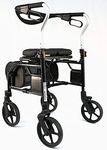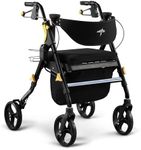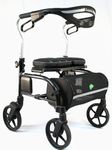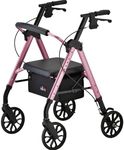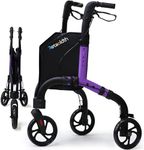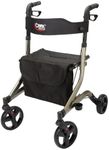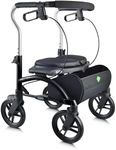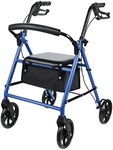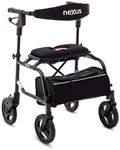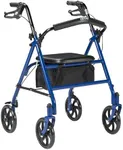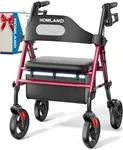Buying Guide for the Best Rollator Walker
Choosing a rollator walker is an important decision for anyone who needs extra support with mobility. The right rollator can make daily activities easier, safer, and more comfortable. When shopping for a rollator, it's important to think about where and how you'll use it, your physical needs, and the features that will make your life easier. Understanding the key specifications will help you find a rollator that fits your lifestyle and provides the support you need.Weight CapacityWeight capacity refers to the maximum amount of weight the rollator can safely support. This is important because using a rollator that can't handle your weight can be unsafe and may damage the walker. Rollators typically come in standard, heavy-duty, and bariatric versions. Standard models usually support up to 250-300 pounds, while heavy-duty and bariatric models can support 350 pounds or more. To pick the right one, choose a rollator with a weight capacity that is higher than your body weight to ensure safety and durability.
Seat HeightSeat height is the distance from the ground to the seat of the rollator. This matters because it affects how easy it is for you to sit down and stand up. Rollators come with different seat heights, usually ranging from about 18 to 24 inches. Lower seats are better for shorter users, while higher seats suit taller people. To find the right seat height, measure the distance from the floor to the back of your knee when standing and choose a rollator with a seat height close to that measurement.
Overall WidthOverall width is the measurement of the rollator from one side to the other. This is important for maneuvering through doorways, hallways, and tight spaces. Narrow rollators (around 22-24 inches wide) are easier to use indoors, while wider models may offer more stability but can be harder to fit through small spaces. Consider where you'll use the rollator most often—if you need it mainly indoors, a narrower model is usually best.
Wheel SizeWheel size affects how smoothly the rollator moves over different surfaces. Smaller wheels (6-8 inches) are good for indoor use and smooth floors, while larger wheels (8-10 inches or more) handle outdoor terrain, grass, and uneven surfaces better. If you plan to use your rollator mostly indoors, smaller wheels are fine. For outdoor use or mixed environments, larger wheels provide better stability and comfort.
Foldability and PortabilityFoldability refers to how easily the rollator can be collapsed for storage or transport. This is important if you need to take your rollator in a car or store it in a small space. Some rollators fold flat, while others fold more compactly. If you travel often or have limited storage, look for a rollator that folds easily and is lightweight enough for you or a helper to lift.
Braking SystemThe braking system helps you control the rollator and stop safely. Most rollators have hand brakes, but the design and ease of use can vary. Some have loop brakes that you squeeze, while others have push-down brakes. If you have limited hand strength or dexterity, test different brake types to find one that's comfortable and easy for you to use.
Storage OptionsMany rollators come with baskets, bags, or pouches for carrying personal items. This feature is important if you want to keep your hands free or need to carry things like a purse, groceries, or medical supplies. Consider how much storage you need and whether you prefer a basket (which is open and easy to access) or a bag (which can be more secure and private).
